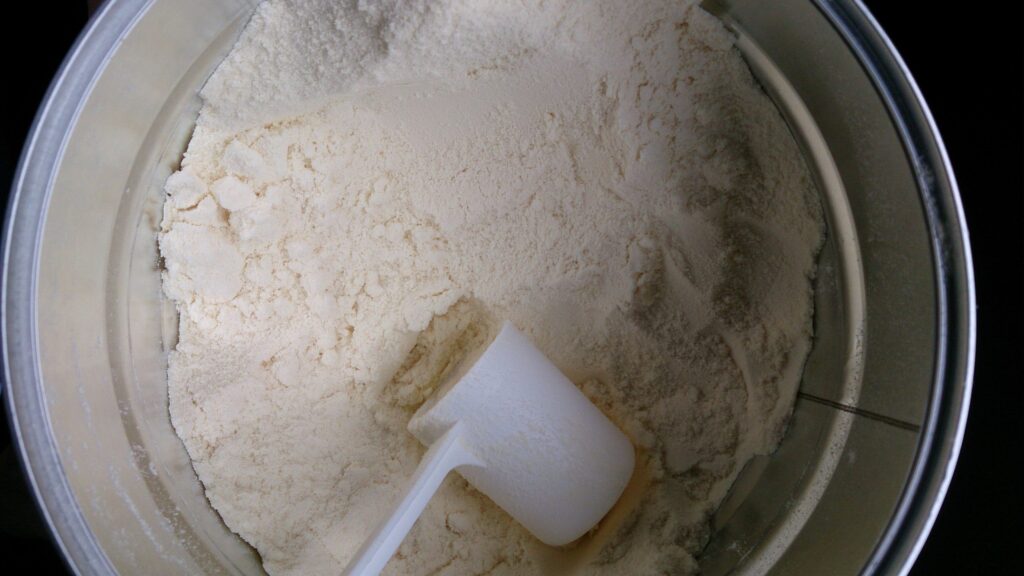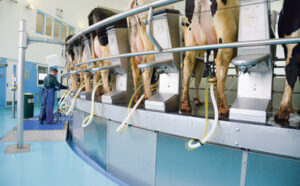
It’s no secret that New Zealand’s economic fortunes are tied to demand from China, but just how big of a problem is the current slowdown? The stakes are high, considering exports to China were $20.4 billion in the year to June 30 or just under 30% of total merchandise exports.
Recent data out of China makes for grim reading, and the nosedive in whole milk powder (WMP) prices in the latest Global Dairy Trade auction only added to the jitters, particularly after Fonterra cut its forecast payout for the second time in a month.Fonterra’s forecast payout to farmers for the current season is now between $6.00 and $7.50 per kilogram of milk solids, with a midpoint of $6.75 per kg MS.
It had already slashed the forecast by 12% in August to between $6.25 and $7.75 per kg MS, with a midpoint of $7.00, citing the slowdown in China as a key factor.Some analysts are waving red flags.
“It’s a large problem for NZ, considering China makes up almost half of our WMP exports, at least a third of SMP [skim milk powder] exports, but most importantly, drives the global price for dairy commodities currently,” HighGround global dairy consultant Stu Davison said.
According to Davison, the writing has been on the wall for some time now, and he thinks it will get worse before it gets better. Global dairy prices fell 7.4% in last week’s auction, and whole milk powder tanked 10.9%.“It could be argued that this is a correction, but I also think that the market is about to over-correct into much lower territory in a hands-off sort of a market”, he said.
Recent data shows China’s total imports of dairy products stood at 1.39 metric tonnes in the first six months of the year, a decrease of 15.2% year on year.ASB Bank economist Nathaniel Keall said slowing global growth and an “underwhelming” Chinese economic recovery mean demand for NZ exports has weakened.
ASB expects Chinese demand for NZ exports to remain comparatively subdued for the next 12 months. It’s not just about dairy, either. China is also the largest market for the red meat sector, not only in volume but also value. The market pays top dollar for a wide range of cuts and products.
According to recent industry figures, China made up roughly a third of NZ’s red meat exports in June. Exports into China, however, were down around 21% in the year.
RaboResearch senior agricultural analyst Emma Higgins also pointed to lower import demand from China, which is currently working through a wave of milk – a surge that has been growing for some years.
She noted, however, that it’s cyclical.
“Markets are weak, and they are challenging at the moment. But we do not consider this to be a super-cycle downturn.”Exporters also pointed to the cyclical nature of commodity markets.Fonterra acknowledged there is a combination of factors, including the lack of a post-covid rebound in China, that have resulted in a drop in the price of WMP.
“[However], China is still the world’s top market for dairy imports, and the country’s consumption of dairy products continues to grow.“While China’s economic growth could continue to slow in the coming months, it will remain an important market for us.”
About a third of its milk ends up in Greater China, but it is well diversified.“Our China sales book is spread across multiple regions and categories, such as ingredients, food service, consumer, resellers etcetera.”
At the recent Red Meat Sector Conference, Meat Industry Association chief executive Sirma Karapeeva told BusinessDesk there were “some concerning” headwinds coming out for China. It has “very high” inventory levels across all proteins sitting in its cold stores.
“So, we need to wait for that to work its way out.”That is because it had “bought up large” to avoid global fluctuations.However, while it will create some “pain points”, Karapeeva also said it is cyclical.
“We’ve seen this before … prices go up and down as demand and volumes go up and down.”She hoped farmers and companies will be able to see the long-term vision with international statistics pointing to a “very high” demand for protein worldwide.
Karapeeva said the United States, which has predominantly been a beef market for NZ, could pick up some of the slack.ANZ Bank senior agri economic Susan Kilsby said the situation in China “indicates that ideally, we would always have a range of markets that we can sell to, so we can move product around a bit when the unexpected happens”.
She noted, however, that this is “not that easy to actually do”.
Markets like and value consistent, reliable supply, “but if you can move a bit like we are currently seeing with more beef going to the US, then that can help balance the markets out”, she said. “So long as we are selling commodities, we will be exposed to commodity cycles.”




